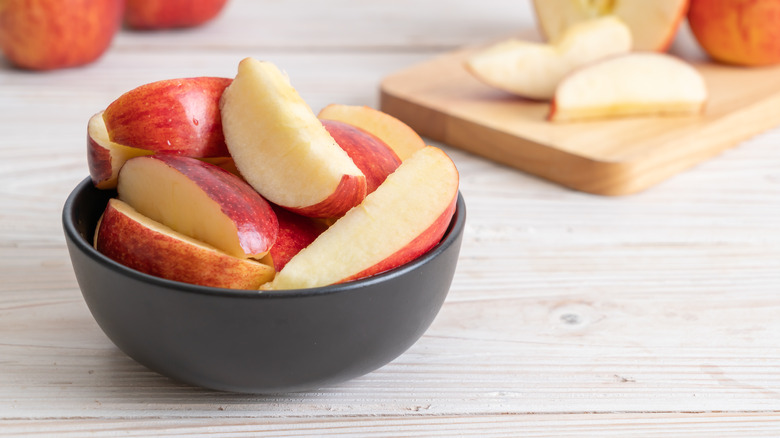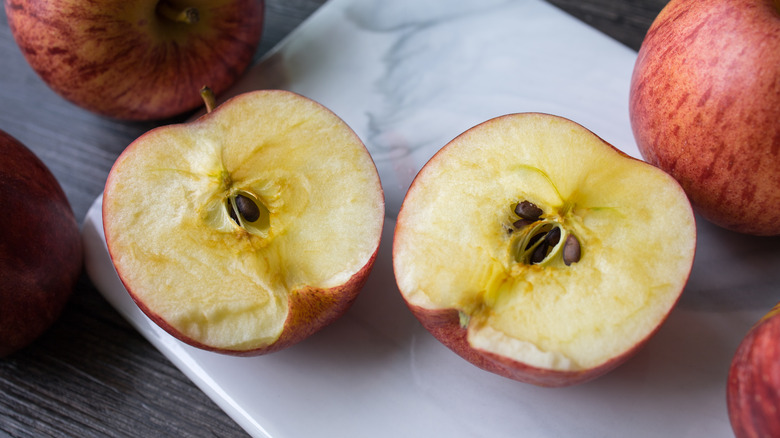Is It Safe To Eat Mealy Apples?
Taking a full bite out of a nice solid apple is a simple and pure satisfaction. The way it just fits in your hand perfectly, the juice, the flavor, the crunch ... It doesn't get much better, which is why biting into an apple and getting a mouthful of sawdust is so astronomically disappointing. That apple had one job.
In terms of texture and flavor, a mealy apple is certainly unappealing, but is it actually dangerous to eat? According to The Kitchn, apples can get like this when they get old and/or they've been stored improperly. The mealy texture comes from the bonds between the cells becoming less cohesive, which means when you take a big bite, the apple sort of disintegrates into a bunch of loose apple cells. That extra bit of resistance from the tightly bonded apple cells is what gives the apple that satisfying snap. Mushy texture is a sign that the apple is beginning to go bad, per Healthline. This is because the mushy flesh is a more hospitable environment for mold to grow.
What to do with mushy apples?
If you do find yourself with some mealy apples, first check to see if there are signs of spoilage. Signs of an apple gone bad are wrinkled skin, soft spots, bruising, discoloration, and tasteless flesh. If you find any of these signs, or if you see mold or the apple smells funky, then it's best to throw your apples out.
If your apples have not gotten to that inedible point, and you still want to make use of them, slightly mealy apples can still be utilized in some cooked recipes. The Kitchn suggests using these apples in recipes that will allow you to bypass the mushy texture and get right to the flavor. Dishes like applesauce, apple strudel, apple butter, and a whole host of others can use mealy apples without you or whoever you're serving to being any the wiser.
So next time you feel the crushing disappointment of a mealy apple, be reminded that all it needs is a different kind of attention, and even mealy apples can become something delicious.

